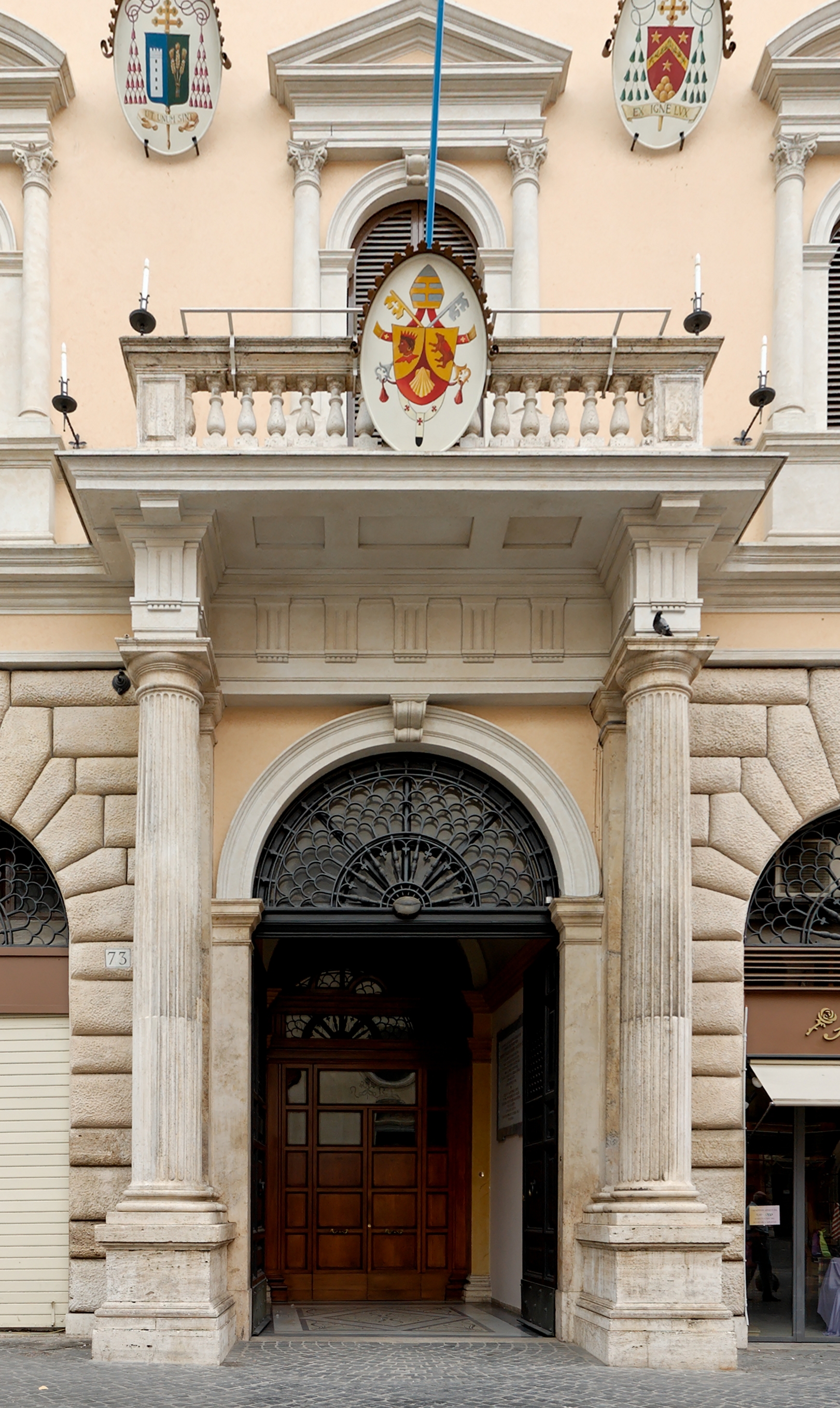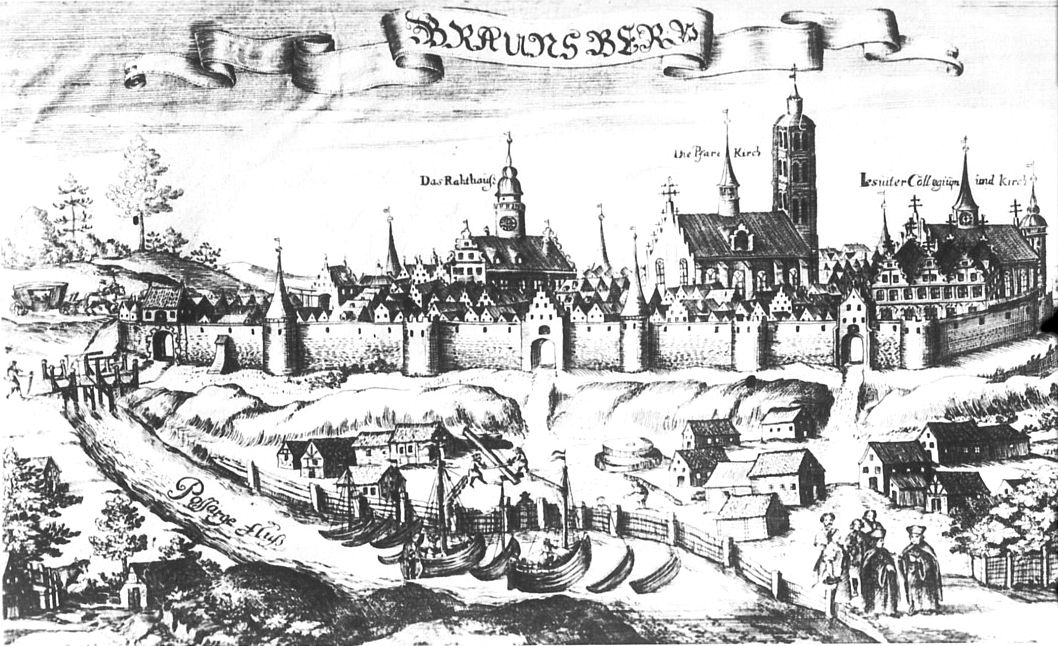|
Rafajil Korsak
Rafajil Nikolai Korsak ( be, Рафал Мікалай Корсак, uk, Рафаїл Корсак, pl, Rafał Mikołaj Korsak) (c. 1599 – 28 August 1640) was the " Metropolitan of Kiev, Galicia and all Ruthenia" in the Ruthenian Uniate Church — a ''sui juris'' Eastern Catholic Church in full communion with the Holy See. He reigned from 1637 until his death in 1640. Life Mikalai Korsak was born near Navahrudak from a noble Calvinist family. Primaries sources disagree on his birth year, which anyway can be fixed into a range from 1598 to 1601. He studied by the Jesuits in Niasviž and in Vilnius, and later in Papal Missionary College in Braniewo and by the Jesuits in Prague. By the Jesuits he converted to the Latin Church and later, supported by Metropolitan Jazep Velamin-Rutski, he joined the Greek-Catholic Church. In 1620 he entered in the Order of Saint Basil the Great taking the religious name of Rafajil (Rafael) and he passed his year of novitiate in the monast ... [...More Info...] [...Related Items...] OR: [Wikipedia] [Google] [Baidu] |
Ruthenian Uniate Church
The Ruthenian Uniate Church ( Belarusian: Руская Уніяцкая Царква; Ukrainian: Руська Унійна Церква; la, Ecclesia Ruthena unita; pl, Ruski Kościół Unicki) was a particular church of the Catholic Church in the territory of the Polish–Lithuanian Commonwealth. It was created in 1595/1596 by those clergy of the Eastern Orthodox Church who subscribed to the Union of Brest. In the process, they switched their allegiances and jurisdiction from the Ecumenical Patriarchate of Constantinople to the Holy See. The formation of the church led to a high degree of confrontation among Ruthenians, such as the murder of the hierarch Josaphat Kuntsevych in 1623. Opponents of the union called church members "Uniates" although Catholic documents no longer use the term due to its perceived negative overtones. Development Following the partition of the Polish–Lithuanian Commonwealth (1772–1795), the various successor authorities treated the Uniates diff ... [...More Info...] [...Related Items...] OR: [Wikipedia] [Google] [Baidu] |
Calvinist
Calvinism (also called the Reformed Tradition, Reformed Protestantism, Reformed Christianity, or simply Reformed) is a major branch of Protestantism that follows the theological tradition and forms of Christian practice set down by John Calvin and other Reformation-era theologians. It emphasizes the sovereignty of God and the authority of the Bible. Calvinists broke from the Roman Catholic Church in the 16th century. Calvinists differ from Lutherans (another major branch of the Reformation) on the spiritual real presence of Christ in the Lord's Supper, theories of worship, the purpose and meaning of baptism, and the use of God's law for believers, among other points. The label ''Calvinism'' can be misleading, because the religious tradition it denotes has always been diverse, with a wide range of influences rather than a single founder; however, almost all of them drew heavily from the writings of Augustine of Hippo twelve hundred years prior to the Reformation. The ... [...More Info...] [...Related Items...] OR: [Wikipedia] [Google] [Baidu] |
Church And Monastery Of Holy Trinity
Monastery of the Holy Trinity ( uk, Монастир Святої Трійці, lt, Vienuolynas ir Šv. Trejybės cerkvė, pl, monaster św. Trójcy ) is a monastery built in Vilnius by the Ruthenian Uniate Church and Grand Hetman of Lithuania Konstanty Ostrogski as a thanksgiving to the God for the victory in Battle of Orsha. It belongs to the Order of Saint Basil the Great and the Ukrainian Greek Catholic Church. The church is dedicated to the Holy Trinity. Beside this church, the monastery compound contains a fortified entrance gate, a university, a hotel complex for visitors, monastic cells including the Konrad's cell. The church is surrounded by adjoining four towers at each corner. This monastery is associated with the Union of Brest personalities like Josaphat Kuntsevych, Archbishop of Polatsk who took vows here and spent first years of his monastic life, as well as a prominent reformer of the Basilian Order, Veliamyn Rutsky. History The church According to a legend, ... [...More Info...] [...Related Items...] OR: [Wikipedia] [Google] [Baidu] |
Archimandrite
The title archimandrite ( gr, ἀρχιμανδρίτης, archimandritēs), used in Eastern Christianity, originally referred to a superior abbot (''hegumenos'', gr, ἡγούμενος, present participle of the verb meaning "to lead") whom a bishop appointed to supervise several "ordinary" abbots and monasteries, or as the abbot of some especially great and important monastery. In the Eastern Orthodox Church and the Eastern Catholic Churches "archimandrite" is most often used purely as a title of honor (with no connection to any actual monastery) and is bestowed on a hieromonk as a mark of respect or gratitude for service to the Church. This title is only given to those priests who have been tonsured monks, while distinguished non-monastic (typically married) priests would be given the title of archpriest. History The term derives from the Greek: the first element from ''archi-'' meaning "highest" or from ''archon'' "ruler"; and the second root from ''mandra'' meanin ... [...More Info...] [...Related Items...] OR: [Wikipedia] [Google] [Baidu] |
Roman Colleges
The Roman Colleges, also referred to as the Pontifical Colleges in Rome, are institutions established and maintained in Rome for the education of future ecclesiastics of the Catholic Church. Traditionally many were for students of a particular nationality. The colleges are halls of residence in which the students follow the usual seminary exercises of piety, study in private, and review the subjects treated in class. In some colleges there are special courses of instruction (languages, music, archaeology, etc.) but the regular courses in philosophy and theology are given in a few large central institutions, such as Pontifical Urbaniana University, the Pontifical Gregorian University, the Pontifical Lateran University, and the Pontifical University of Saint Thomas Aquinas, ''Angelicum''. Purpose The Roman colleges, in addition to the obvious advantages for study which Rome offers, allows the students to have a different experience of university life from the one of the irrespective ... [...More Info...] [...Related Items...] OR: [Wikipedia] [Google] [Baidu] |
Ivatsevichy Raion
Ivatsevichy (Ivacevičy) District is an administrative subdivision, a raion A raion (also spelt rayon) is a type of administrative unit of several post-Soviet states. The term is used for both a type of subnational entity and a division of a city. The word is from the French (meaning 'honeycomb, department'), and is co ... of Brest Region, in Belarus. Its administrative center is Ivatsevichy. In this district the sixth largest lake in Belarus Vygonoschanskoye Lake is situated. Demographics At the time of the Belarus Census (2009), Ivatsevichy Raion had a population of 59,906. Of these, 94.4% were of Belarusians, Belarusian, 3.7% Russians, Russian, 0.9% Ukrainians, Ukrainian and 0.5% Poles, Polish ethnicity. 76.5% spoke Belarusian language, Belarusian and 22.7% Russian language, Russian as their native language. Notable residents * Andrzej Tadeusz Bonawentura Kościuszko (English: Andrew Thaddeus Bonaventure Kosciuszko; 1746, Mieračoŭščyna estate – 1817), national ... [...More Info...] [...Related Items...] OR: [Wikipedia] [Google] [Baidu] |
Novitiate
The novitiate, also called the noviciate, is the period of training and preparation that a Christian ''novice'' (or ''prospective'') monastic, apostolic, or member of a religious order undergoes prior to taking vows in order to discern whether they are called to vowed religious life. It often includes times of intense study, prayer, living in community, studying the vowed life, deepening one's relationship with God, and deepening one's self-awareness. The canonical time of the novitiate is one year; in case of additional length, it must not be extended over two years.CIC, canon 648 In the Eastern Orthodox Church, the novitiate is officially set at three years before one may be tonsured a monk or nun, though this requirement may be waived. The novitiate is in any case a time both for the novice to get to know the community and the community to get to know the novice. The novice should aspire to deepening their relationship to God and discovering the community's charism. The novit ... [...More Info...] [...Related Items...] OR: [Wikipedia] [Google] [Baidu] |
Order Of Saint Basil The Great
The Order of Saint Basil the Great ( uk, Чин Святого Василія Великого, translit=Chyn Sviatoho Vasyliia Velykoho; la, Ordo Sancti Basilii Magni, abbreviated OSBM), also known as the Basilian Order of Saint Josaphat, is a Greek Catholic monastic order of pontifical right that works actively among Ukrainian Catholics and other Greek-Catholic churches in central and eastern Europe. The order received approbation on 20 August 1631, and is based at the Monastery of the Holy Trinity, Vilnius. History Revival In the 16th century, with the efforts of Metropolitan of Kiev Josyf Veliamyn Rutsky and Archbishop of Polotsk Josaphat Kuntsevych, the monastic order was revived on territory of the Polish–Lithuanian Commonwealth. Following World War II, the order was eliminated by the Russian Orthodox from its original territory and forced into exile. With the fall of the Soviet Union, it was reestablished again in modern Ukraine as part of the Ukrainian Greek Cat ... [...More Info...] [...Related Items...] OR: [Wikipedia] [Google] [Baidu] |
Latin Church
, native_name_lang = la , image = San Giovanni in Laterano - Rome.jpg , imagewidth = 250px , alt = Façade of the Archbasilica of St. John in Lateran , caption = Archbasilica of Saint John Lateran in Rome, Italy , type = Particular church () , main_classification = Catholic , orientation = Western Christianity , scripture = Vulgate , theology = Catholic theology , polity = Episcopal , governance = Holy See , leader_title = Pope , leader_name = , language = Ecclesiastical Latin , liturgy = Latin liturgical rites , headquarters = Archbasilica of Saint John Lateran, Rome, Italy , founded_date = 1st century , founded_place = Rome, Roman Empire , area = Mainly in Western Europe, Central Europe, the Americas, the Philippines, pockets of Africa, Madagascar, Oceania, with severa ... [...More Info...] [...Related Items...] OR: [Wikipedia] [Google] [Baidu] |
Prague
Prague ( ; cs, Praha ; german: Prag, ; la, Praga) is the capital and largest city in the Czech Republic, and the historical capital of Bohemia. On the Vltava river, Prague is home to about 1.3 million people. The city has a temperate oceanic climate, with relatively warm summers and chilly winters. Prague is a political, cultural, and economic hub of central Europe, with a rich history and Romanesque, Gothic, Renaissance and Baroque architectures. It was the capital of the Kingdom of Bohemia and residence of several Holy Roman Emperors, most notably Charles IV (r. 1346–1378). It was an important city to the Habsburg monarchy and Austro-Hungarian Empire. The city played major roles in the Bohemian and the Protestant Reformations, the Thirty Years' War and in 20th-century history as the capital of Czechoslovakia between the World Wars and the post-war Communist era. Prague is home to a number of well-known cultural attractions, many of which survived the ... [...More Info...] [...Related Items...] OR: [Wikipedia] [Google] [Baidu] |
Braniewo
Braniewo () (german: Braunsberg in Ostpreußen, la, Brunsberga, Old Prussian: ''Brus'', lt, Prūsa), is a town in northern Poland, in Warmia, in the Warmian-Masurian Voivodeship, with a population of 16,907 as of June 2021. It is the capital of Braniewo County. Braniewo is the second biggest city of Warmia after Olsztyn and one of the historical centers of the region. Location Braniewo lies on the Pasłęka River about 5 km from the Vistula Lagoon, about 35 km northeast of Elbląg and southwest of Kaliningrad ( pl, Królewiec). The Polish border with Russia's Kaliningrad Oblast lies 6 km north, and may be reached from Braniewo via National road 54. History Middle Ages According to the German geographer Johann Friedrich Goldbeck (1748-1812), the town originally was named Brunsberg after Bruno von Schauenburg (1205–1281), bishop of Olomouc in Moravia, who accompanied King Ottokar II of Bohemia in 1254 and 1267 when the latter participated in the crusade of ... [...More Info...] [...Related Items...] OR: [Wikipedia] [Google] [Baidu] |
.jpg)




